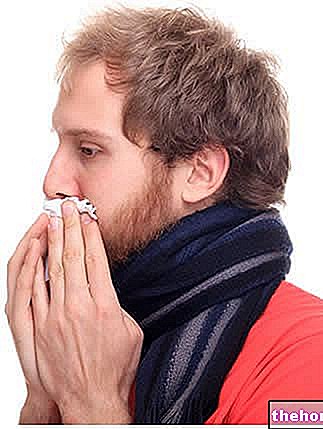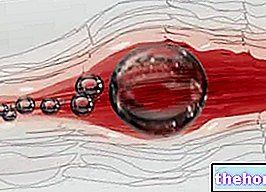1) Department of Internal Medicine, Athena Villa dei Pini Clinic, Piedimonte Matese (CE);
2) Division of Internal Medicine, A.G.P. Piedimonte Matese (CE);
What is secondhand smoke?
The World Health Organization (WHO) puts the fight against passive smoking at the forefront, therefore the defense of non-smokers from the harmfulness of tobacco smoke. A battle that must involve legislators, educators, health professionals and people of common sense.
"Passive" smoke is that which is involuntarily inhaled by people who are in contact with one or more "active" smokers and is the main pollutant in closed environments. Passive smoke is the result of the smoke exhaled by the active smoker (tertiary current), added to the smoke produced by the slow and imperfect combustion (400-500 ° C) of the cigarette left to burn in the ashtray or in the hand between one puff and the other (current It is admitted that passive smoke is made up for 6/7 by the secondary current and 1/7 by the tertiary current (smoke exhaled by the smoker).
Passive smoking is considered to be side smoking, to distinguish it from central smoking which, on the other hand, represents active smoking. However, it should be remembered that side smoke, being diluted in the ambient air with respect to the central unit, has a lower impact on the non-smoker.
Passive smoking is a ubiquitous problem, as it affects people from every culture and country.This exposure takes place daily in vital conditions: at home, at work, on public transport, in restaurants, in bars; practically in every place where there are people. It is estimated that 79% of Europeans over 15 are exposed to passive smoking.
In Italy, the recent law banning smoking in public places was a great proof of civility, which it is hoped will also infect those countries that have not yet taken a similar decision.
Because it hurts

The extent of exposure to second-hand smoke depends on some variables such as the number of cigarettes smoked, the size of the room where you smoke, the level of tar, the duration of exposure and the ventilation of the room.
Diseases associated with passive smoking

Much of the studies on secondhand smoke have focused on respiratory damage to children. In fact, when children are exposed to passive smoking, the problem takes on much more particular values. In fact, the diction of passive smoke = involuntary smoke has never been more correct than in this situation. It is evident that children are much more defenseless towards passive smoking, also because they are not always free to leave a polluted room or self-sufficient to do it alone.
Even in non-smoking adults, recent studies have shown an increased risk of asthma, chronic bronchitis, pulmonary emphysema and, above all, the incidence of tumors.
If from a personal point of view passive smoking is ultimately a question of "respect" for the non-smoker, from a social point of view it becomes a question of "right", because the freedom of the individual ends where the freedom of others begins. The protection of non-smokers from passive smoking, therefore, is an "indispensable public health action, essential for the health of future generations.
By Correspondence: Dr. Luigi Ferritto
Department of Internal Medicine Clinical Respiratory Physiopathology Unit "Athena" Villa dei Pini
Piedimonte Matese (CE)




























